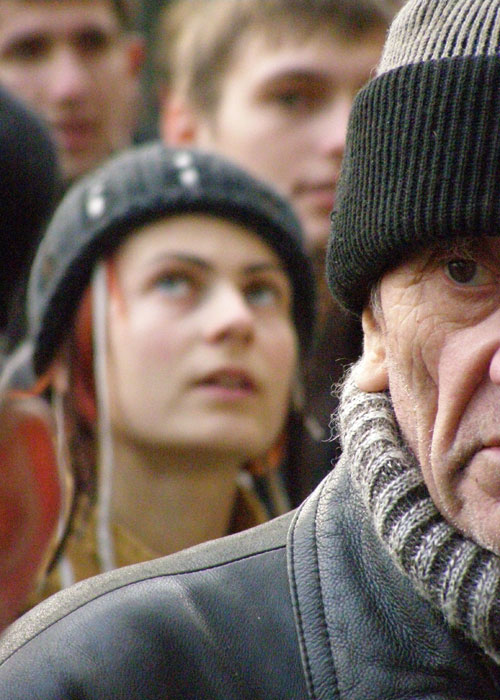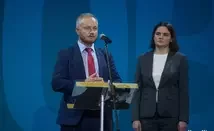 |
Today is the most horrible day in the modern history of Belarus. In the night of Oct. 29, 1937 80 people were executed in the vaults of NKVD (Stalin’s secret service, predecessor of KGB). They were the pick of our nation.
Among those executed in this dreadful night were Alyaksandar Charnushevich, people’s commissar of the popular education, Anani Dziakau, rector of Belarusian State University, outstanding writers Mikhas Zaretski, Mikhas Charot, Platon Halavach, leader of the patriotic youth Ales Dudar, renowned doctors, physicists, lawyers, pedagogues, chemists, geographers. All of them were accused of anti-soviet activities.
Stalinists, similar to Nazis, strived to eradicate the elites of enslaved nations, in order to devoid them of future leaders – forever. On October 29, 1937 the machine of murder has reached the peak of its productivity. On the whole, from 1930 till 1941 no less than 600,000 people were repressed in Belarus, no less than 200,000 of them were murdered. These were the most educated, the most talented, and the most active people.
Belarus-born members of government and administration, Academy of Sciences, artistic unions were practically eliminated. Only 15 of 400 writers remained free. The purge destroyed the national school of historic science, wiped out businessmen, farmers and well-off peasants, religious activists (not a single Christian church was left in the Eastern Belarus).
Many of the arrested went through such tortures, that they lost will to live and craved for death as deliverance from suffering.
In some social groups, national communities and professional milieus only those remained alive, who either were saved by a miracle, or cooperated with NKVD.
Just like Nazis, Stalinists delayed the executions, because they planned to use the condemned as slaves. They also lacked technical resources to eliminate so many people in such a short time.
Those who were too famous, whose death would hurt the soviets more than their life, survived. As Nazis didn’t dare to kill Sigmund Freud, Stalinists left poets Kupala and Kolas alive. Still, there are terrible documents, which prove that Kupala was deliberately driven into a suicide attempt, and that Kolas has been sleeping for three years in full clothes, awaiting the arrest, which seemed immediate to him.
The nightmare became the everyday reality.
Such a well-planned, determined and cruel eradication of whole social layers was unprecedented. Old butchers were executed by new butchers, and the latter – by the new generation of “cogs”, who erased the bloody footprints. Berman was executed by Nasedkin, Nasedkin was executed by Tsanava. The mass graves were destroyed by those, who didn’t know anything about the people buried there. The WWII gave an opportunity to present them as the sites of Nazi crimes.
The terror was implemented in the name of the social utopia, but in practice it was a projection of the Russian imperial interest. Similarly, Nazis eliminated everyone, who was taking up their “lebensraum”. Everything was liquidated, even potential and hypothetical threats. The empires wanted to take over the world.
The scale of the catastrophe is so enormous that in many spheres Belarus has not yet made up for its human losses.
Stalin’s time put a start to the degradation of the human potential of our rural areas. Prison customs began to substitute morality. No wonder – so many people went through prisons and labor camps.
We remember the victims. We remember the butchers. Eternal lights light up under the furs of Kurapaty and under prison walls.
Barys Tumar / Nasha Niva
You can also see the photo reports from the traditional annual march to Kurapaty:



























